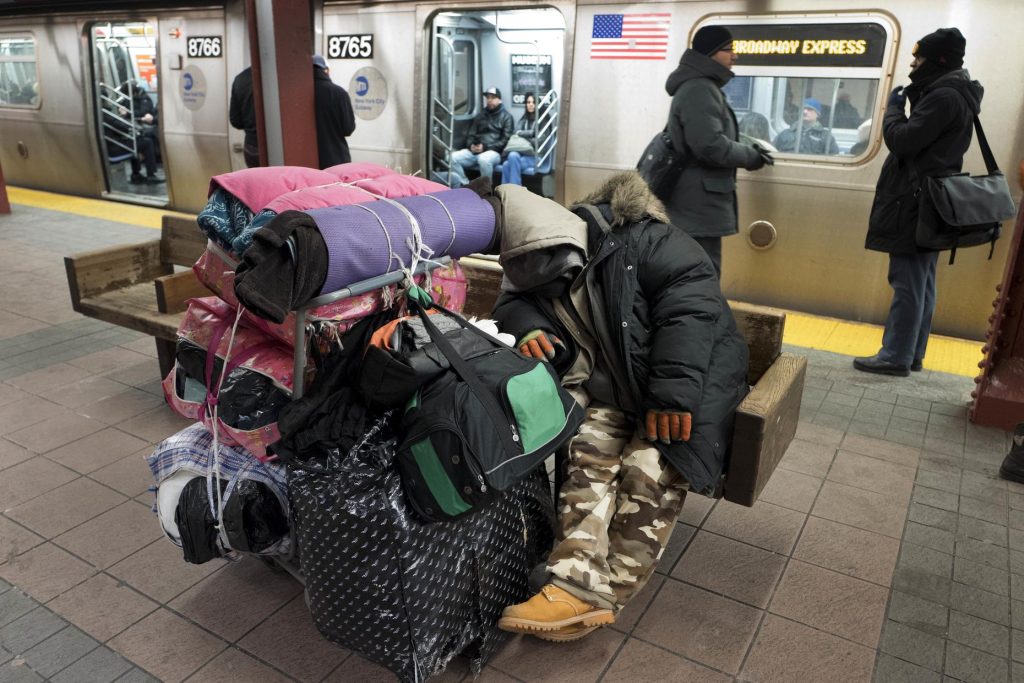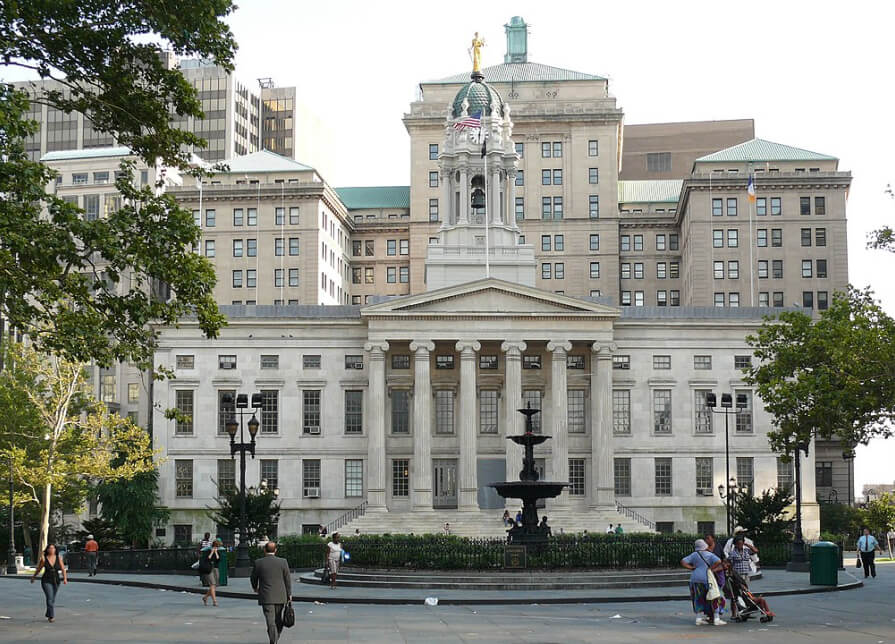By Jane McGroarty AIA
In October 2022 New York City Mayor Eric Adams issued Emergency Executive directing all relevant city agencies to coordinate their efforts to respond to the asylum seeker humanitarian crisis and construct the city’s Humanitarian Emergency Response and Relief Centers. This was a response to state officials in Florida and Texas who began transporting people out of their states to Washington DC, New York City and, Massachusetts. This political stunt may have gained certain politicians some national recognition, but it failed to provide any meaningful solutions to what a national and international situation.
This crisis pinpointed what was already an untenable situation for New Yorkers who cannot afford permanent housing. It’s too easy to dismiss people who are homeless as criminals or mentally ill. We tend to remember the person on the subway who hasn’t had a bath in a very long time, but I have seen many more people sitting quietly on benches with their shopping bags waiting to return to a shelter for a night’s sleep.
In August 2022 there were 55,036 homeless people, including 17,680 homeless children, sleeping each night in New York City’s main municipal shelter system. By October there were 17,000 more people in the system. The Mayor stated that the number could reach 100,000 by the end of 2022. The Mayor’s prediction did not consider that over 100,000 immigrants would be added to the existing 70,000 plus homeless people in the NYC. By the fall of 2023, Mayor Eric Adams admitted that the migrants to NYC are now a humanitarian crisis that will cost the city about $12 billion over three years. On October 13, 2023 he declared a state of emergency and directed all relevant agencies to coordinate their efforts to construct the humanitarian relief centers as well as suspending certain land use requirements to expedite this process. The City has established a reticketing center in Manhattan where asylum-seekers can get free, one-way tickets to anywhere in the world.
I knew this was a crisis, but it was brought home to me when I learned about a man who works for a local family-owned business. He had been formerly homeless and has able to turn his life around and find decent employment. He reunited with his young daughter, but they have not been able to find affordable permanent housing and are living in a shelter.
The man won a lottery for affordable housing which was cause for much celebration. He and his daughter would finally have a permanent home of their own. After going through the application process, he was told that he didn’t qualify because he earned too much money. What is this man supposed to do? He cannot afford market rate housing and he makes too much money for affordable housing.

Something is profoundly wrong with this picture. The heart-breaking part of this is that this man is hardly alone. New York City has abandoned people who are not wealthy and, essentially, blamed them for their situation.
There seems to be a sense that this problem cannot be solved and there are certainly a lot of reasons why this might be the case. WIMBY would like to offer some ideas about how to get started. Firstly, there is no magic bullet. Housing people who are currently homeless will take many agencies (city, state, federal), the real estate and construction industries, social service agencies, community organizations, activists, and preservationists to make a commitment to providing safe and healthy homes for the most vulnerable members of society.
- The City and State need to determine actual vacancy rates for rent stabilized apartments. The vacancy rate grew during Covid and HPD calculated that roughly 1 in 10 are vacant. The fact that the City and the State both have jurisdiction over housing further complicates the situation. We do know that there are landlords who are warehousing rent stabilized apartments or attempting to drive renters out of their apartments by renovating around them or harassing them.
- Estimates are that 13,000 apartments are illegally being used for short-stay rentals. In NYC it is mostly illegal to rent an apartment or a room for less than 30 days. In 2020 the city passed a law requiring short-term rental platforms to hand over quarterly data, including the address and URL of each rental, reservation details, contact information about the host and bank accounts to which payouts were made. This helped, but a second law that took effect in January 2023 requires first-time hosts to register their homes before renting them out. The city now vets applicants to make sure they can legally host renters for fewer than 30 days. A host needs an NYC issued confirmation number, without which the platforms will not process the transaction.
- All new residential construction should have some permanently affordable units. If we are serious about improving racial and economic inequities, MIH developers should not be allowed to build the affordable units outside the primary project area.
- The Zoning Resolution should be amended to allow for ADUs (Accessory Dwelling units) where feasible. Currently there are many illegal ADUs and cellar units that are unsafe, as we learned from Hurricane Ida.
- NYC should update the AMI (Area Median Income) provided by HUD. About half of New York City renter households fall into Extremely Low Income or Very Low Income AMI categories. The City is building “affordable” housing that no one can afford. HUD includes the wealthier suburbs in its calculation of AMI. The HUD numbers are a suggestion and New York City could and should adjust the AMI to reflect its population.
- Invest in NYCHA housing. New York city has a valuable resource in its public housing system. We need to take advantage of RAD (Rental Assistance Demonstration), which allowed NYCHA to hand over maintenance and renovations to private interests. An initial project at Baychester Houses in the Bronx has met with approval from many of the residents who were very skeptical at the outset.
- Michael Kimmelman, the architecture critic for The New York Times, suggested that there is a 198-acre parcel of land in the Bronx that could, using the Manhattan density of 640 per acre, provide housing for 126,700 people. This land is now used for a golf course. I don’t hate golf, but it seems to me that the land would be much better utilized for housing. After all, the developer of Ferry Point in the Bronx, owns four other golf courses in the area. (Unfortunately, Trumps’s lease of Ferry Point was recently taken over by Bally’s, a corporation that runs casinos and hotels.)

These are but a few ideas, and none of them involve loading people in buses and sending them somewhere else. What is really needed is for people to come down out of their silos, listen to others, and together solve the seemingly intractable problem of housing affordability and homelessness.





Commodo dolor ullamco incididunt excepteur tempor do pariatur sint ex Lorem id.
Ullamco laborum enim dolore quis occaecat aliquip mollit esse id sint. Nulla qui do consequat est est et amet tempor aliqua. Lorem pariatur ex dolore qui ut duis pariatur dolor occaecat aute. Et laborum laboris cupidatat irure. Consectetur eiusmod ipsum aute do deserunt in officia reprehenderit fugiat amet. Proident occaecat nulla voluptate consectetur Lorem proident sint dolor ipsum cupidatat id aliqua aliqua.